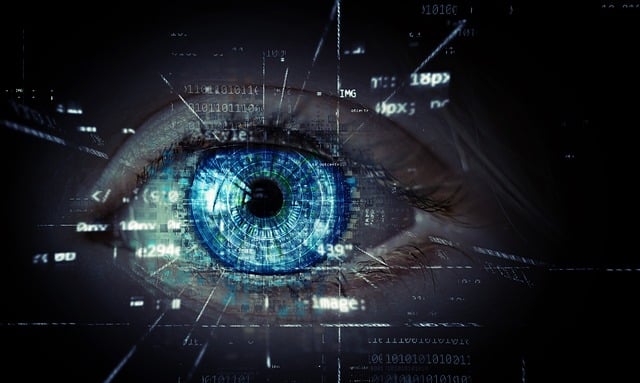By ATS Staff - April 9th, 2017
Latest Technologies
Augmented Reality (AR): Transforming the Digital and Physical Worlds
Augmented Reality (AR) is a cutting-edge technology that superimposes digital content onto the physical world in real-time, enhancing the user's perception of their surroundings. Unlike Virtual Reality (VR), which immerses users in a completely artificial environment, AR blends virtual elements with the real world, creating an interactive and immersive experience.
The Basics of AR Technology
At its core, AR uses cameras, sensors, and displays—often on smartphones, tablets, or wearable devices—to project digital objects or information into the real world. These devices capture real-world environments, and AR software processes this information, allowing virtual content such as images, sounds, or 3D models to be integrated seamlessly into the user’s view.
There are several key components that make AR work:
- Tracking and Mapping: AR systems rely on tracking the user’s position and orientation to overlay digital elements correctly. This can be done through GPS, visual markers, or advanced sensors like LiDAR (Light Detection and Ranging) that map the surroundings.
- Computer Vision: This technology allows AR applications to understand and interpret the physical world, identifying surfaces, objects, and spatial dimensions to accurately place virtual objects in the real environment.
- Display: AR can be experienced on various devices. Smartphones and tablets often use their screens to display AR content, while more immersive devices like smart glasses (e.g., Microsoft HoloLens, Google Glass) project images directly into the user's field of vision.
Applications of AR
- Gaming and Entertainment:
One of the most popular uses of AR has been in gaming, with "Pokémon Go" as the prime example of AR success. This game brought AR into the mainstream by allowing users to see and interact with digital creatures in the real world. Other entertainment applications include interactive experiences at museums, theme parks, and theaters, where AR enhances storytelling and audience engagement. - Retail and E-Commerce:
AR is revolutionizing how consumers shop. Apps from companies like IKEA or L’Oréal allow users to visualize furniture in their homes or virtually try on makeup before purchasing. By providing a "try-before-you-buy" experience, AR is transforming both in-store and online shopping. - Education and Training:
AR provides immersive learning experiences by bringing abstract concepts to life. In medical education, AR can simulate surgeries, helping students practice complex procedures in a risk-free environment. Similarly, AR is used in technical training, enabling workers to visualize complex machinery and receive step-by-step instructions in real time. - Healthcare:
In the medical field, AR is being applied in areas such as surgery, diagnostics, and patient care. Surgeons can use AR to overlay 3D representations of organs and tissues onto a patient’s body during surgery, improving precision. AR can also aid in rehabilitation and patient education, providing dynamic, interactive ways for patients to understand their treatments. - Navigation and Tourism:
AR has made significant inroads in travel and navigation apps. By overlaying directions onto real-world views, AR enhances pedestrian and vehicle navigation. Tourists can use AR apps to get real-time information about landmarks, historical sites, or cultural heritage as they explore a city. - Workplace Collaboration:
AR is proving useful in remote work environments. Engineers, architects, and designers use AR to collaborate on projects, enabling them to visualize and modify 3D models together, regardless of their physical location. AR is also becoming important in industrial environments, assisting workers in maintenance, repair, and quality control.
The Future of AR
As AR technology continues to evolve, its applications are expected to expand into every aspect of life. Advances in hardware, such as lighter, more sophisticated AR glasses, will make the technology more accessible. Additionally, developments in artificial intelligence (AI) and 5G networks will enable more powerful, faster, and more immersive AR experiences.
In the future, AR could revolutionize communication, with virtual meetings becoming more lifelike, blending real and virtual attendees into shared spaces. AR could also redefine urban planning, architecture, and even how we socialize, with entire virtual worlds layered over physical environments.
Challenges and Considerations
Despite its promising potential, AR faces several challenges. Creating seamless, high-quality AR experiences requires significant computing power and advanced algorithms, which can limit the scalability of applications. Privacy concerns also arise, especially when AR apps collect data on a user’s surroundings. Additionally, prolonged use of AR, especially through headsets, raises health concerns such as eye strain and motion sickness.
Moreover, the adoption of AR in society will depend on the availability of affordable devices and user-friendly applications. Companies developing AR technologies must balance innovation with usability to ensure broad acceptance.
Conclusion
Augmented Reality is a transformative technology that bridges the digital and physical worlds. Its potential to enhance everyday experiences across various industries—from entertainment and retail to education and healthcare—is vast. As AR technology advances, it promises to reshape how we interact with the world, making it a crucial element of the future digital landscape.
Popular Categories
Agile 2 Android 2 Artificial Intelligence 50 Blockchain 2 Cloud Storage 3 Code Editors 2 Computer Languages 12 Cybersecurity 8 Data Science 15 Database 7 Digital Marketing 3 Ecommerce 3 Email Server 2 Finance 2 Google 6 HTML-CSS 2 Industries 6 Infrastructure 3 iOS 3 Javascript 5 Latest Technologies 42 Linux 5 LLMs 11 Machine Learning 32 Mobile 3 MySQL 3 Operating Systems 3 PHP 2 Project Management 3 Python Programming 26 SEO - AEO 5 Software Development 46 Software Testing 3 Web Server 7 Work Ethics 2